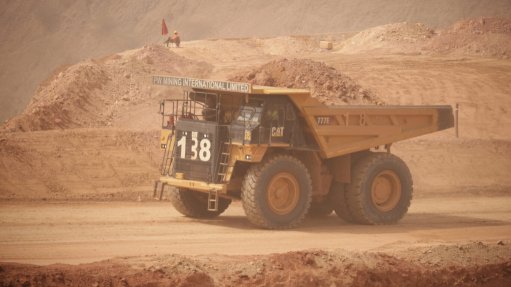
MOVING GEARS Allied Gold aims to increase its gold production from the current roughly 400 000 oz/y to over 600 000 oz/y, by 2026
While the African mining industry faces several challenges, the potential rewards of investing in the continent are significant, with companies willing to navigate the complexities of the region for the opportunity to unlock vast resources and drive substantial economic growth, according to North Africa-focused gold producer Allied Gold.
One significant challenge is the hesitancy of investors and companies to capitalise and operate in certain African jurisdictions owing to perceptions of geopolitical risks and fiscal instability, says Allied Gold CEO Peter Marrone.
“Successful mining projects require a stable fiscal and governance environment, which can be challenging to maintain in some African countries,” he notes.
The African mining sector has also been affected by constrained capital investment and diminished valuations.
Another challenge is the fragmented nature of the African mining landscape, with many different players and the absence of consolidation making it difficult to effectively showcase the unique investment opportunities available.
This is exacerbated by the need to develop the necessary infrastructure for mining operations in remote areas, which includes primarily roads, power supplies and water facilities.
Despite these challenges, Africa's growing mining sector presents a unique opportunity for investors, with the continent boasting rich geological endowments and a young, growing population that is increasingly educated and globally oriented, emphasises Marrone.
Growing Gold
Boasting a diversified portfolio of long-life assets at both producing and development stages, Allied aims to be Africa’s fastest-growing gold producer, backed up with assets including the Sadiola mine in Mali, the Côte d’Ivoire complex and the Kurmuk project in Ethiopia.
The company aims to increase its gold production from the current roughly 400 000 oz/y to over 600 000 oz/y, by 2026. This ambitious target will be driven by the expansion of the Sadiola mine and the development of the Kurmuk project, highlights Marrone.
While the company’s operations have primarily been concentrated in West Africa, Marrone highlights that Mali, Côte d’Ivoire and Ethiopia boast a strong track record of new discoveries and potential for mine life extensions, coupled with progressively reducing costs for the company.
He notes that while Ethiopia’s mining industry is not as established as Mali and Côte d’Ivoire’s respective mining jurisdictions, it boasts appealing geology, “sitting on the same Arabian Nubian Shield trend as other highly prospective mining jurisdictions, such as Egypt and Saudi Arabia”.
Ethiopia’s mining industry also acknowledges the importance of mining in enabling economic growth, with the Ethiopian government outlining mining as one of five pillars in its approach to boost economic development.
“Since beginning our operations in the region, we have found Ethiopia to provide a stable operating environment, access to reliable infrastructure and clean renewable power, and a workforce eager to upskill in a growing sector,” enthuses Marrone.
Project Updates
When Allied took control of the Sadiola mine in January 2021, which was previously on care and maintenance and was practically at a standstill, the site contained unusable tailings without the advantage of an oxide stockpile to ease the transition, explains Marrone.
Allied is currently focusing on the exploration and development of high-grade oxide deposits, including the Diba project which is 15 km south of Sadiola, to increase low-cost oxide feed, and boost near-term production and cash flows.
The mine is also undergoing an expansion to increase throughput and handle more high-grade fresh rock, with a long-term production target of between 300 000 oz/y and 400 000 oz/y at an all-inclusive sustaining cost (AISC) below $1 000/oz.
To date, the company has invested over $127-million in the Sadiola project, and has plans to allocate an additional $100-million this year and next to increase crushing and grinding capacity and upgrade critical infrastructure.
The company has also planned an investment in excess of $350-million for construction of a new plant, from 2026 to 2028, with the aim of increasing mining capacity to achieve a production level of 300 000 oz/y, which is expected to be sustainable for at least 15 years.
Allied aims to achieve an average yearly gold production of about 290 000 oz over the first five years and sustain an average of over 240 000 oz/y over a ten-year mine life based solely on current mineral reserves, at an AISC of $950/oz.